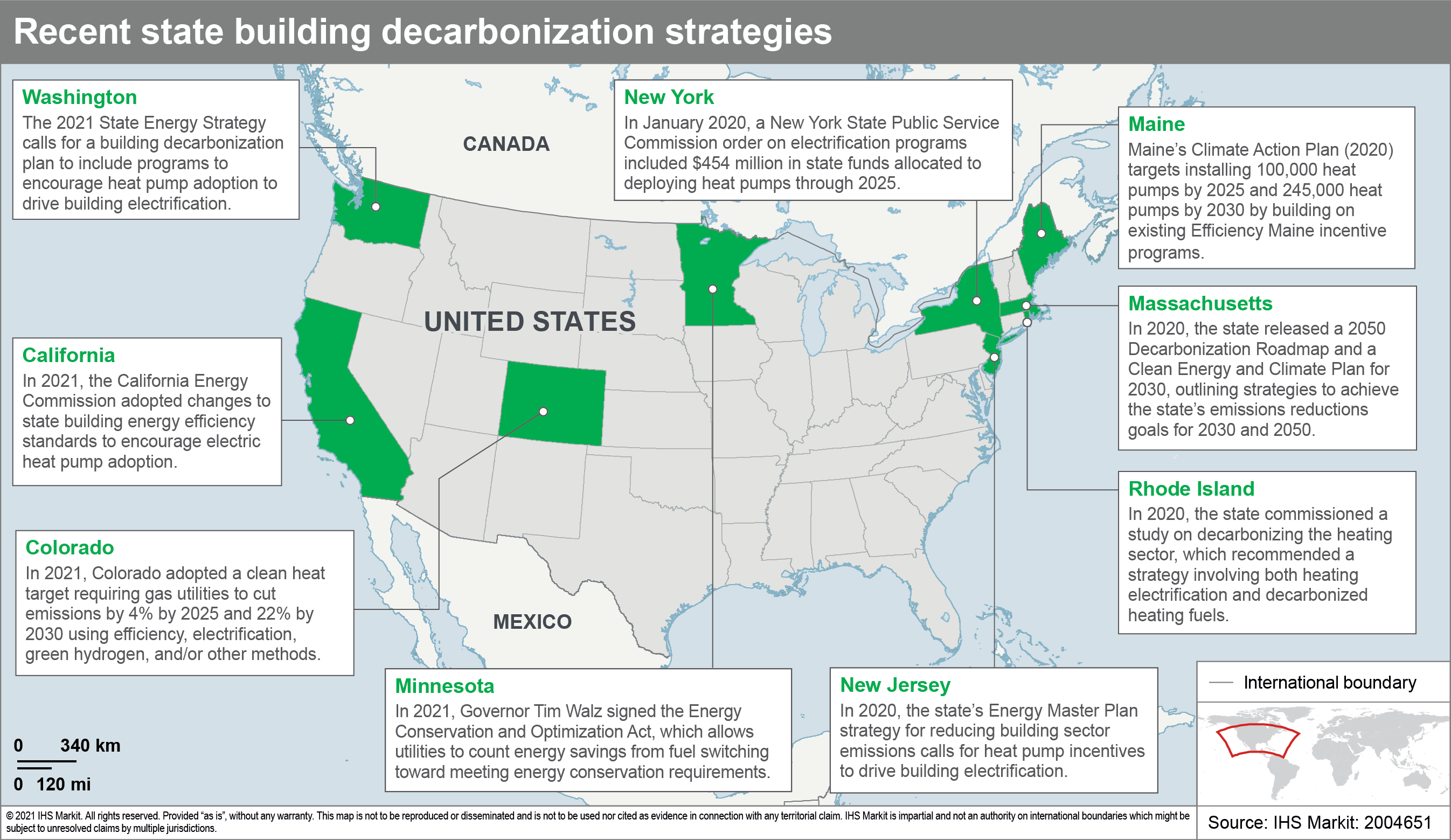Electrification is not a silver bullet for building decarbonization in North America
Twenty-four states and Washington, DC have established economywide carbon emissions reduction targets through statutory or executive action. Many of these states are taking the next step to develop policies to reduce emissions from economic subsectors, including the building sector, in line with their economywide commitments.

The primary target of building decarbonization policy is building heat since it is the largest driver of building energy use and the end use most reliant on fossil fuels. Electrification is a common building decarbonization strategy that typically involves replacing an existing fossil-energy based heating system with an electric heat pump. For the electrification of building heat to become widespread, heat pumps must provide heat at a lower overall cost than most fossil energy-based alternatives.
An analysis of existing residential buildings in the US shows that heat pumps are not cost-effective compared with gas-based space heating systems in most regions and that the difference is considerable. In the US, air-source heat pumps (ASHPs) are the most common heat pump technology in residential buildings. Because ASHPs have higher up-front costs than gas furnaces, they must be able to lower annual space heat energy costs enough to offset the higher up-front cost. However, across much of the country, ASHPs are likely to increase annual heating costs compared with gas furnaces. Even when secondary savings associated with avoided air conditioner replacement costs and utility incentives are accounted for, ASHPs are still more expensive than gas furnaces.
Looking ahead, ASHP costs are unlikely to fall enough to change the overall cost picture from a consumer perspective. Heat pump components are incorporated in other mass market heating and air conditioning products sold globally, leaving less room for greater production scale to lower costs. ASHPs also rely on mature technologies used in a variety of other appliances such as air conditioners and refrigerators; major improvements in efficiency are unlikely without new technological breakthroughs
Though electrification of building heat may be more cost effective than fossil-energy based alternatives in certain circumstances (e.g., in new buildings or buildings that rely on fuel oil), in general, electrification is not the silver bullet for building decarbonization. Overall, building electrification will take hold in states with strong policy mechanisms in place to encourage heat pump adoption, but building decarbonization will likely rely on a complement of strategies that include cleaner fuels and weatherization.
Learn more about our North American energy research.
Benjamin Levitt, associate director with the Climate and Sustainability team at IHS Markit, is focused on the analysis of regulatory and market developments in the North American electric utility sector.
Posted 30 November 2021
This article was published by S&P Global Commodity Insights and not by S&P Global Ratings, which is a separately managed division of S&P Global.

